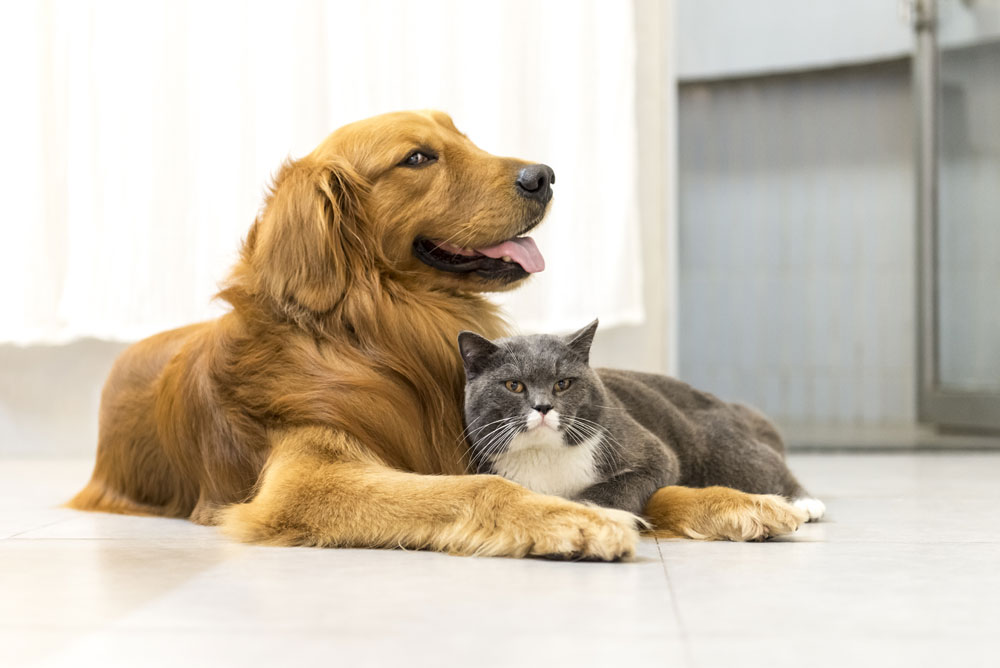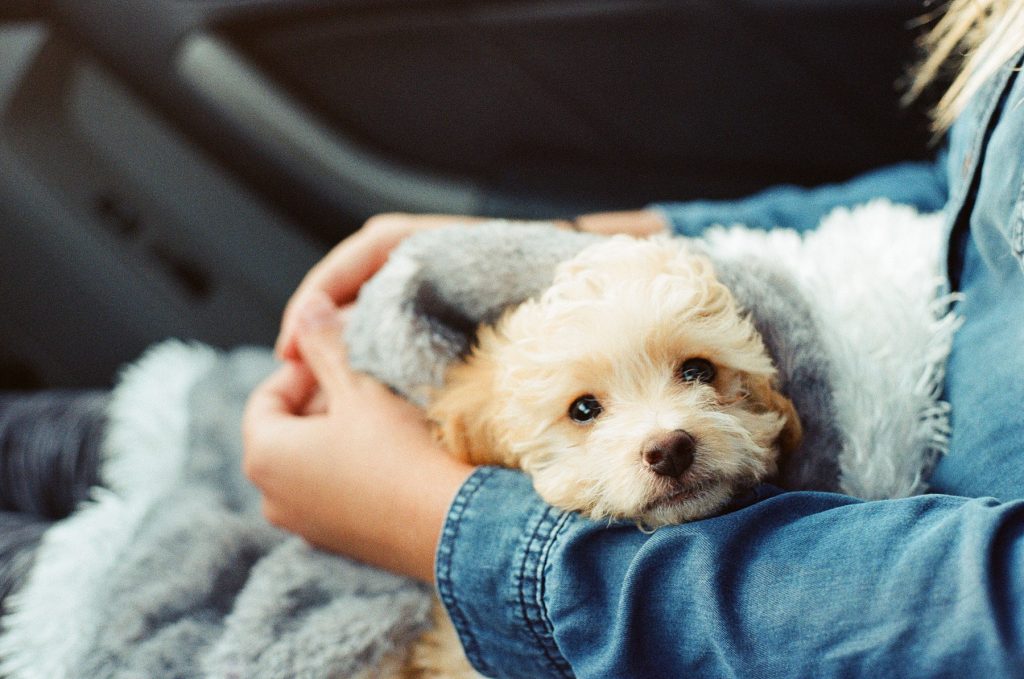Behavioral Issues In Pets, Natural Pet Health
New pet…new challenges
How to introduce a new dog or cat into your home safely and minimal anxiety
As avid animal lovers, we’re firm believers in the concept of ‘the more the merrier’ when it comes to having pets at home! Within reason…and always mindful of space and care time constraints, of course. And while there are few things more exciting than to welcome four new paws into a household, there are many things that must be considered to make for a safe and comfortable transition for everyone involved. January and February are common months for a new pet to enter a home. Shelters often find themselves full to capacity with ‘Christmas pups’ heartlessly abandoned once the full realisation dawns of the time and cost commitment of the new family member. And many true animal lovers will hopefully then open their hearts to give such precious creatures their well-deserved forever homes. But while it’s exciting and fun to welcome a new family member into your home, it can also be a little worrying and sometimes downright stressful! Fortunately, there are many things that can be done to help alleviate that stress, for all involved!
Preparation is key
A little time spent in preparation for the new arrival will be time well spent to make sure you have everything you need for your new pet, including their own bed, food dishes, toys etc. It’s also essential that you bring your new pet home when you have plenty of time to help them to settle in. Taking a few extra days off work over a long weekend can give you the essential time needed to bond with your new family member and to give them more time to adjust to their new home under your watchful eye.
Introducing the new pet to existing four-legged family members
Time is key here and in general, introductions should be done slowly and gradually and in a very controlled manner, without forcing the relationship. It’s essential to give your new pet lots of time and space to explore their new home before introducing them to the rest of the family and be realistic about your expectations – you can’t expect an animal to relax immediately in new, unfamiliar surroundings, nor be best buddies with his or her new house mates from the get go. It can take time to make friends!
Use plenty of positive reinforcement during introductions, with lots of verbal praise and treats and never reprimand or punish your pets for growling, hissing, or trying to fight with each other during introductions phase. Not only are these behaviors completely normal when animals meet for the first time, but punishment can backfire as the pet being scolded can come to associate punishment with the presence of the other pet, leading to more aggression and bad feelings between them.
Keep your new pet’s and existing pet’s food and water bowls in separate places at the start to help reduce any feelings of competition for resources. Maintaining the same routine that your existing pets are used to will also help to keep stress levels down for them, as well as teach your new pet the household routine. So, keep feeding, walking, and playing with your existing pets at their usual times.
Introducing a new cat
When introducing a new cat to a resident cat, keep in mind that cats a) are extremely territorial, and b) hate change. Two factors that can make this a challenging process! At the start, your new cat should be confined to one room with her litter box, food, water, bed, toys and scratching post. Let the resident cat(s) get used to the scent of the new cat through the closed door at first and feeding them on either side of the closed door is a good idea, since they can hear and smell each other without actually seeing each other – and they come to associate something good (getting fed) with being in each other’s presence.
Once your new cat is using her litter box and eating regularly, you can let her have free time in the house while the resident animals are confined. This will allow the resident animals to become used to the scent of the new cat without meeting face-to-face. When this is going well, you can start to open the door between parties just a crack so that they can see each other.
A transition period where the new cat is placed in a crate in the room with the resident pets is a good step which allows the animals to get used to each other in close proximity, without the risk of arguments breaking out. Once the cats are finally face to face, expect some good ol’ cat staring contests, hissing, even minor squabbles, but don’t let them attack each other. Unfortunately, cats don’t always work things out and unchecked aggression can permanently damage the relationship. Hopefully, if the introductions are slow and smooth enough, the animals will barely notice when the time comes for them to live together.
If intense fear or aggression are noted, you should backtrack on the introduction process and proceed more gradually. Placing litter boxes throughout the house so that each cat has plenty of places to go without being harassed can help to reduce tension, while introducing vertical territory like cat trees, cat shelves, and window perches will allow the cats to get away from each other when needed.
If your resident furry is of the canine variety, remember that he or she has the potential to seriously injure your new cat, even if they don’t mean to. Always keep the dog on a leash and the cat free to move around during early introduction sessions and use lots of treats and praise. Keep the introduction sessions short at first and always try to end the interaction on a positive note. Once the cat and dog are comfortable in each other’s presence and have become accustomed to each other, you can eventually take the dog off leash. However, make sure all interactions continue to be supervised and keep them separated when you’re not at home until you’re absolutely certain there will be no aggression between them.
Introducing a new dog
When two woofs meet for the first time, two people will be needed, since both dogs must be on a leash, with the initial introduction taking place on neutral turf, such as a local park or a sidewalk down the street from your house. This keeps your resident dog from feeling the need to defend his territory and allows him to focus purely on meeting his new buddy. During the initial encounters, speak in a happy, friendly tone and use treats to reinforce that this is a positive experience. Do not allow them to sniff or investigate one another for a prolonged period at first, because this may escalate to an aggressive response.
After a short period give each dog a treat in return for obeying a simple command such as “sit” or “stay” and take the dogs for a walk and continue with the soothing talk, treats and positive reinforcement. When the dogs seem to be tolerating each other well, you can take them home. If the size of the new dog permits, again consider a transition period where the new dog is placed in a crate in the room with the resident pets so they can get used to each other in close proximity. Make sure each dog has their own space, beds, toys, and food dishes so there’s no sense of competition for resources and continue to monitor them and give each of them special attention and treats until the introductory phase is over.
Be patient; most dogs get along well once they’ve gotten accustomed to each other, but don’t leave them alone together until you’re sure they are fully comfortable with each other. When introducing a new dog to a resident cat, keep the dog on a leash and make sure the cat has an easy escape route. Let them see each other from a distance, then work on gradually decreasing the distance between them. Keep these sessions short, use lots of treats, and remember not to scold anyone if there is hissing or growling. Eventually, if all goes according to plan, they will hopefully become best of friends, or at least the cat may come tolerate the new dog!

What about children and new pets?
We firmly believe that all children should have the opportunity to grow up sharing their lives and home with a pet, unless there’s a compelling reason that this should not be the case. However, kids can often appear scary and threatening to new dogs or cats. By virtue of their size, young children are often at eye level with dogs, which can lead dogs to misinterpret inadvertent direct eye contact. They also have a tendency to make sudden, jerky movements and loud or high-pitched noises that can be frightening to pets (and sometimes to the adult humans too!).
The most important thing when introducing a new pet into the home is getting the initial meeting off on the right paw and to always supervise pet and kiddie playtime. Firstly, explain to the child how the new pet may be feeling, and how to make the pet feel more at ease. You can also prepare children by teaching them the proper way to interact with a dog or cat, including showing your child how to offer a closed fist for the dog to sniff, while keeping their gaze down towards the ground. Once the dog sniffs, show the child how to gently stroke the dog’s neck (not coming from the top of the head), and how to avoid sensitive areas like the ears and feet. For cats, show them how to sit quietly on the floor and let the cat approach them at their own pace. Explain how it’s never okay to grab a pet’s tail or try to pick them up if they are struggling. You must explain to your child to never startle a dog or cat by touching them when they are eating or sleeping and never let your child play roughly or aggressively with a pet. They must learn to understand what’s appropriate while playing, and never tolerate your child teasing, chasing, or inflicting pain on a pet.

Dealing with an anxious pet
Some pets may need a little extra help to get through this potentially difficult time, particularly if they are of a sensitive disposition or have had bad experiences with other animals in the past. It can help make the whole process easier on both your existing animals and your new pet to support the introduction with a natural medicine such as HomeoPet’s Anxiety Relief. Anxiety Relief contains a unique blend of natural substances that have been used for centuries to help alleviate stress. Simply dose the remedy directly into your pet’s mouth, or add into their water or at meal/snack time, administering one dose 3 times per day as needed. In acute cases, you can give one dose every 15 minutes (up to 4 doses) and when improvement is seen the frequency of dosing can be decreased to twice daily then once daily until all the animals in the household (both new and old) are settled and comfortable with each other and their surroundings. Tom Farrington MVB MRCVS VetMFHom suggests giving all the pets involved some Homeopet Anxiety Relief or Homeopet Feline Anxiety Relief in the water to help lower anxiety in all the pets involved during the transition period.

One final point, and one which we are sure will come easy to you pet lovers, is to give all pets in the household lots of attention, love, and reassurance. Existing pets may need extra attention to help them feel more secure, and your new pet will need reassurance and comfort as they adjust to their new environment. Read Tyson’s story for a wonderful and touching story about introducing a new soul into a home…





